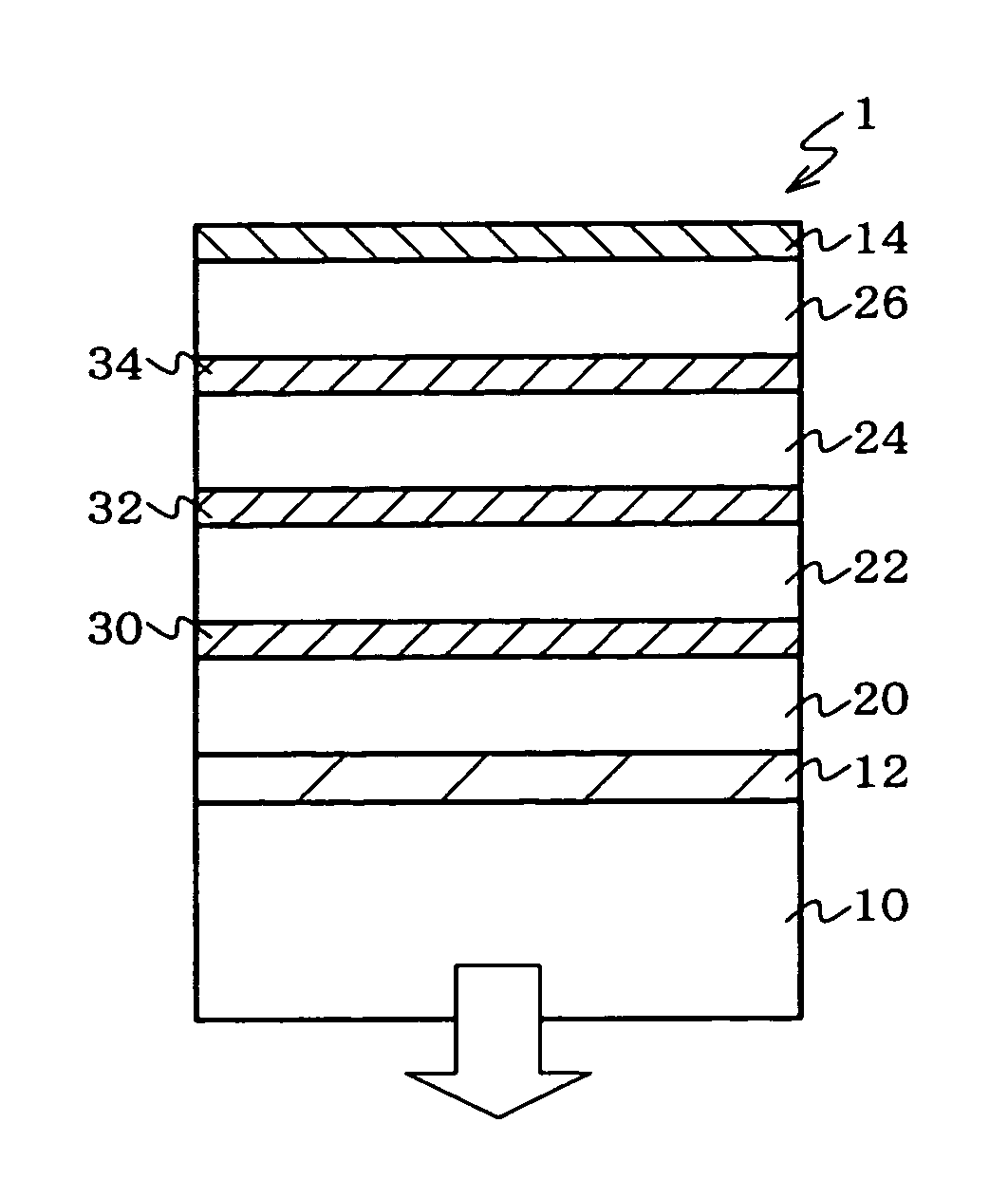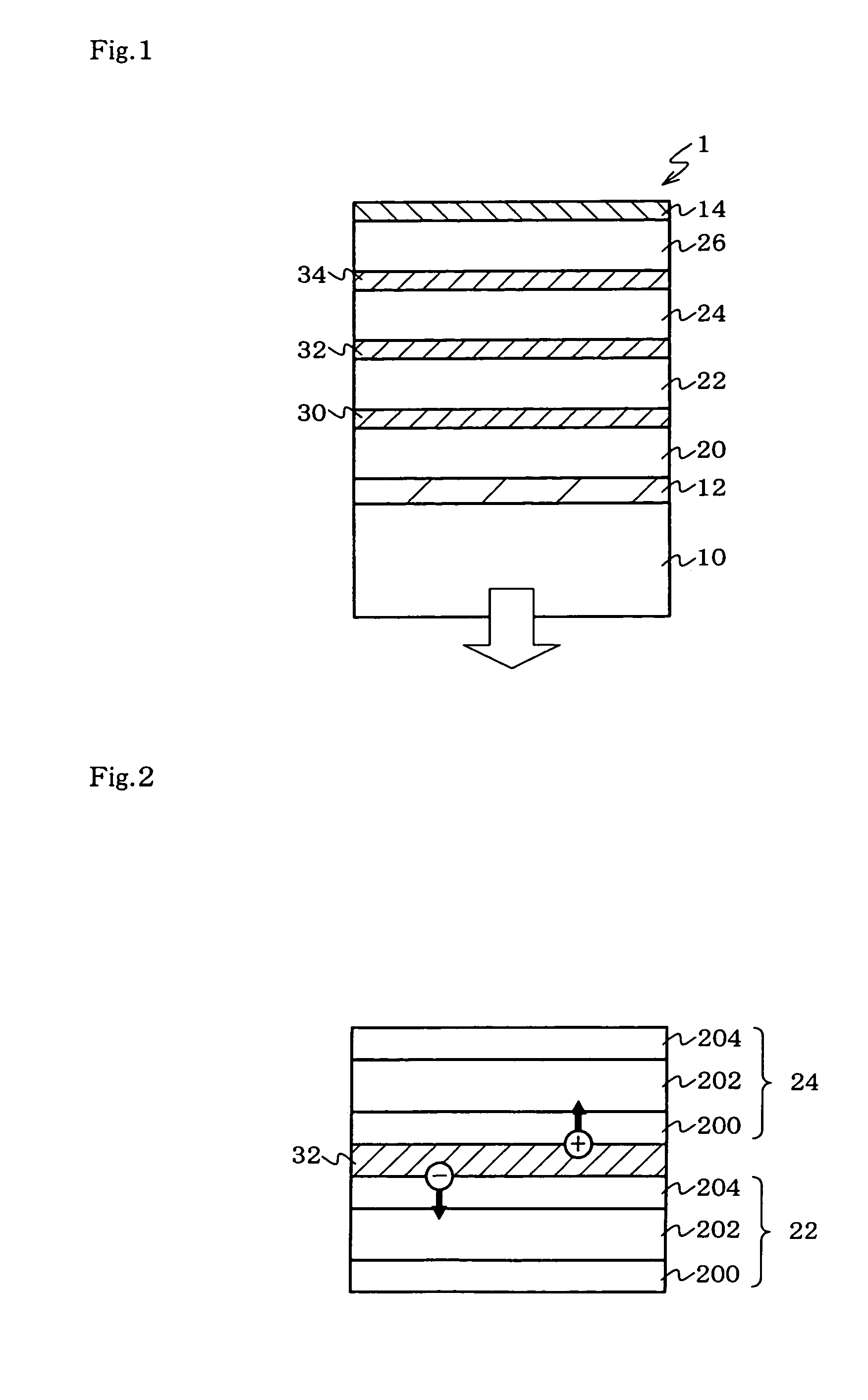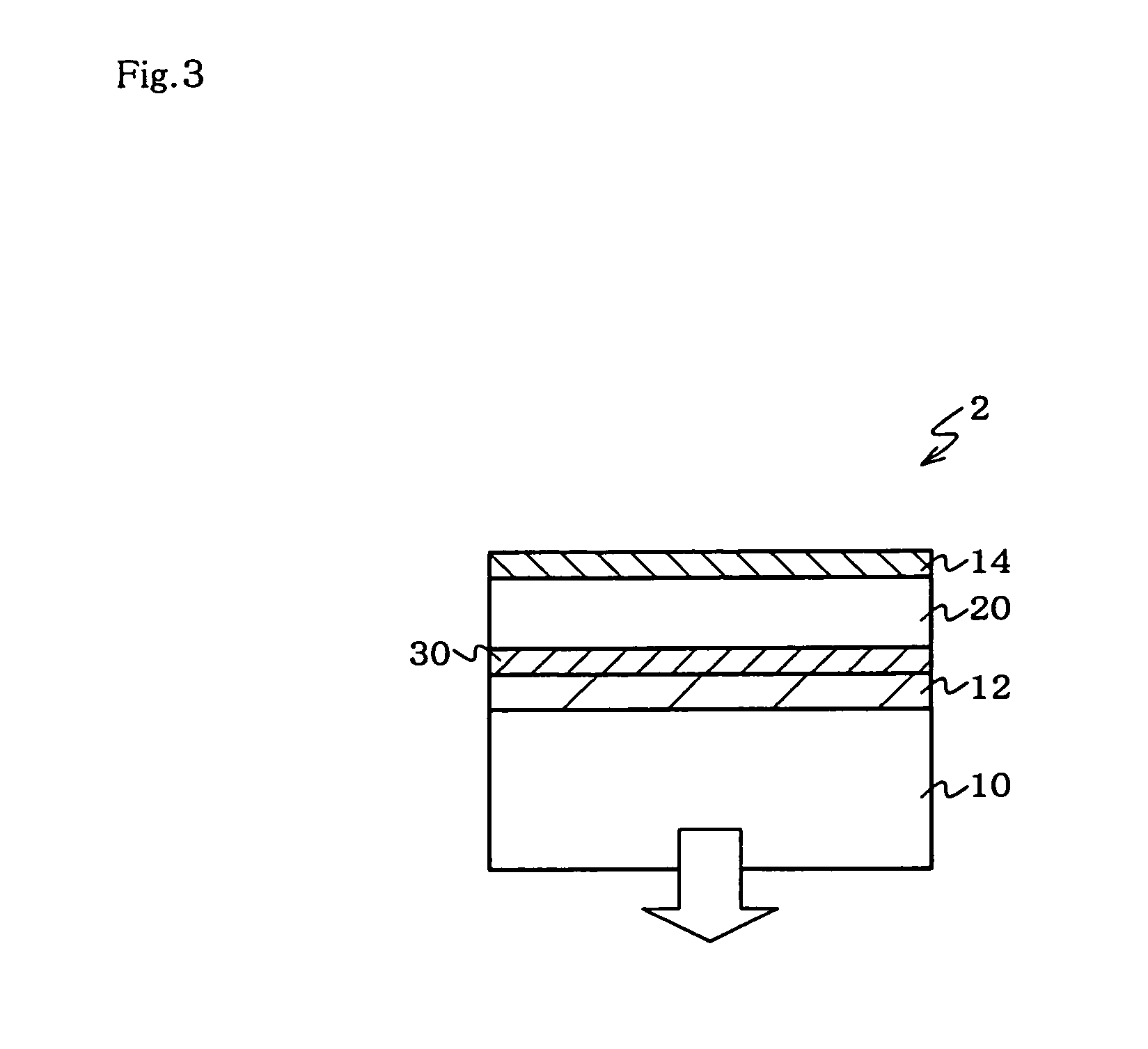Organic electroluminescent device and display
a technology of electroluminescent devices and electroluminescent lamps, applied in the direction of discharge tubes/lamp details, discharge tubes luminescnet screens, electric discharge lamps, etc., can solve the problems of reducing luminous efficiency and achieve the effect of reducing luminous efficiency and degrading viewing angle properties
- Summary
- Abstract
- Description
- Claims
- Application Information
AI Technical Summary
Benefits of technology
Problems solved by technology
Method used
Image
Examples
examples
[0081]Examples of the invention will be described below. The invention is not limited thereto.
(1) Preparation of Glass Substrate with ITO
[0082]The supporting substrate of 25 mm by 75 mm (OA2 glass, Nippon Electric glass Co., Ltd.) was subjected to ultrasonic cleaning with purified water and isopropyl alcohol, dried with air blow and thereafter cleaned with ultraviolet rays. Next this substrate was moved in a sputtering apparatus. An ITO film with a film thickness of 150 nm was formed on the substrate.
(2) Formation of Organic Emitting Layer
[0083]This substrate was moved into an organic deposition device and fixed in a substrate holder. After the pressure in a vacuum vessel was reduced to 5×10−7 torr, a hole injection layer, an organic luminescent medium and an electron injection layer were sequentially deposited in this order.
[0084]Firstly 4,4′,4″-tris(N-(3-methylphenyl)-N-phenylamino)triphenyl-amine (MTDATA) was deposited in a thickness of 55 nm as a hole injection layer.
[0085]Next ...
example 2
[0097]An organic EL device was prepared in the same way as Example 1 except that an intermediate conductive layer was formed by co-deposition of V2O5 and LiF in a thickness of 30 nm. The deposition ratio of LiF to the entire intermediate conductive layer was 0.46. The intermediate conductive layer had a refractive index of 1.76 and absorption coefficient of 2.22. The luminance in the front direction of the organic EL device was 392 nit and the chromaticity thereof was (0.167, 0.366). The difference in chromaticity between the front direction and the viewing angle of 50° was a good value of 0.021.
example 3
[0098]An organic EL device was prepared in the same way as Example 1 except that an intermediate conductive layer was a monolayer of MoO3 film in a thickness of 30 nm. The intermediate conductive layer had a refractive index of 1.85 and absorption coefficient of 2.48. The luminance in the front direction of the organic EL device was 342 nit and the chromaticity thereof was (0.150, 0.299). The difference in chromaticity between the front direction and the viewing angle of 50° was a good value of 0.007.
PUM
 Login to View More
Login to View More Abstract
Description
Claims
Application Information
 Login to View More
Login to View More - R&D
- Intellectual Property
- Life Sciences
- Materials
- Tech Scout
- Unparalleled Data Quality
- Higher Quality Content
- 60% Fewer Hallucinations
Browse by: Latest US Patents, China's latest patents, Technical Efficacy Thesaurus, Application Domain, Technology Topic, Popular Technical Reports.
© 2025 PatSnap. All rights reserved.Legal|Privacy policy|Modern Slavery Act Transparency Statement|Sitemap|About US| Contact US: help@patsnap.com



